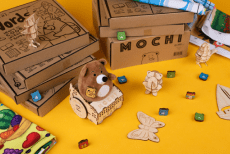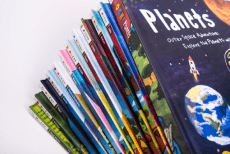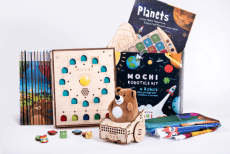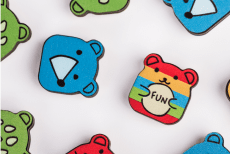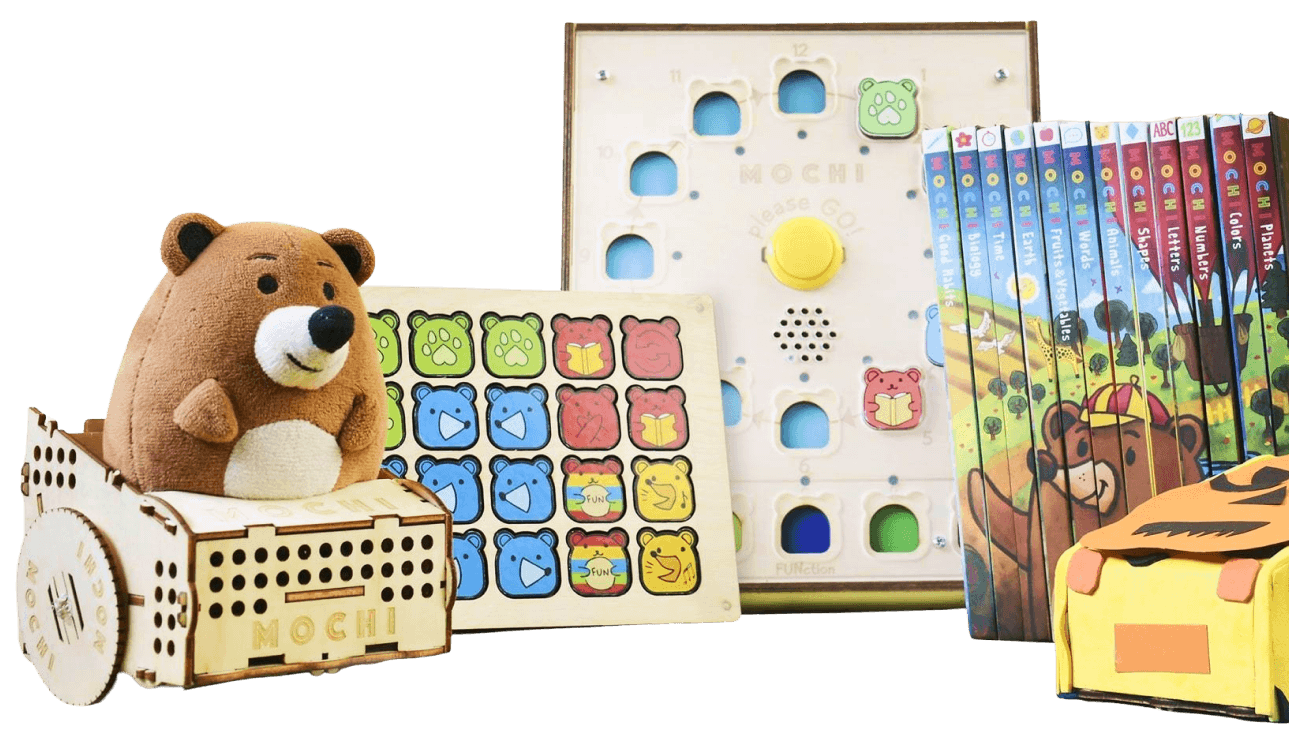Expert Tips for Experimenting With Sidewalk Chalk

No matter what you plan to draw or create with chalk — a fun game, an inspiring message, or even a vibrant, complicated 3-D painting — making art on the sidewalk is a great way to connect with the people around you. You can make chalk art on your own, or work on a larger creation with your neighbors while maintaining 6 feet of separation.
Chalk art is fun to do anytime, but it’s extra special now-when many of us have a little extra time for creative expression and can appreciate the time outside. And what could be more fun than creating a colorful work of art—one that brings joy to your neighbors and, over time, fades away, so you can start work on a whole new beautiful creation? We chatted with street artist Tracy Lee Stum, author of The Art of Chalk Art, about her process. Along the way, she shared her tips for making cool community creations.
Learn With Mochi: Tell us, why is chalk art a great way to cheer up a neighborhood?
Tracy Lee Stum: Something magical happens when you make art in the street. Artists tend to work in isolation, but once you start creating art in a public space, you get energy and support from the people around you— there is this wonderful exchange. Street art invites participation. Especially when the images that you’re creating require people in the pieces to bring them to life. Making street art is a kind of live performance.
Learn With Mochi: Chalk art seems to be very popular right now. Can you tell us why?
Tracy Lee Stum: Chalk art is going crazy right now because people can’t go anywhere. It’s been wonderful to see so many social media posts of kids drawing on fences, walls, and sidewalks. Kids are making art in their neighborhood. It’s great, and I love it.
Parents and kids are looking at what they can do where they are, with whatever they already have at home. Many kids have chalk (or they’re already familiar with it!). It’s non-toxic, inexpensive, and temporary. And because people are staying close to home, that means that neighborhood streets and driveways are convenient canvases. Luckily, chalk works really well on the pavement!
Learn With Mochi: How did you discover sidewalk chalk art?
Tracy Lee Stum: I literally stumbled upon chalk painting by accident while walking by a street painting festival in Santa Barbara. Every year, the event organizers host an exhibition for the artists, known as I Madonnari in front of the Mission as a benefit for the Children’s Creative Project. Seeing over 200 people drawing masterpieces on the pavement with chalk impressed me so much that, the next year, I ended up participating.
Learn With Mochi: What chalk art projects would you recommend for beginners?
Tracy Lee Strum: Learning how to manipulate the chalk on the pavement takes some time, but once you get the hang of it, it’s really fun. There are so many projects that anyone can do with chalk, no matter what your age or skill level is.
Hand-lettering
Writing messages in beautiful letters drawn by hand—a.ka. “hand-lettering”— is an easy, fun way to spread cheer. Little artists might share words of joy and kindness. For some great hand-lettering inspiration, check out artist Trish Wong’s beautiful designs.
Character-based Creations

Another fun project for kids is to draw characters. They can find images in books or online, print the images, cut them out, and then trace them on the ground. For younger kids, parents can do the line drawing for the little ones to fill in.
Forced Perspective

Create a shape or scene, stand or lie down in the right spot, and make yourself part of the art! Take photos for a fun perspective.
3D
More advanced artists may enjoy working in 3D. While it may seem like magic, it is actually a lot of engineering. The geometry is set up so that it only works when you stand in at a certain point, with your camera at a certain location the optical illusion is revealed. (For 3D how-to videos and project instructions check out Tracy’s website.)
Learn With Mochi: How might a group of neighbors host their own sidewalk chalk festival?
Tracy Lee Stum: Creating a neighborhood chalk art quilt is a great way to get everyone involved. Start by making a grid of 2 x 2 squares that kids can fill in however they want. Once kids create their art, the result will be an entire carpet of artwork going down the sidewalk.
Learn With Mochi: Do you have some general tips for making chalk art on the street?
- Decide on your design: Find something that you are excited about drawing that matches your skill level.
- Choose a safe traffic-free location like a closed street or driveway.
- If you are making a 3D drawing, make sure that you don’t have any shadows falling across the area where you’re going to work. You’ll also want to be aware of where shadows are going to fall when someone’s standing in your picture.
- Mark a grid or an area where you are going to work: For little kids, two feet by two feet is manageable. For older kids and more experienced artists, four feet-by-four feet works well.
- When you’re working with chalk, be mindful of how much chalk you use as you draw: You don’t need much!
- For advanced artists, start with mid-range colors so you can create highlights and lowlights to give depth to your drawing.
- Photos, photos, photos! You can best appreciate 3D pieces and forced perspective pieces when you take photos of them. Beyond that, chalk art is ephemeral, so you’ll want to take pictures of your masterpieces in order to remember them!
Learn With Mochi: Is there any special equipment you would recommend using?
- Wear latex gloves for general safety, and so you don’t mix colors while drawing.
- Use pieces of styrofoam or chalkboard erasers for blending.
- If you can, bring a garden kneeling pad with you. It’s invaluable for protecting your knees. (That’s especially useful for parents!)
- Make sure to drink water, wear sunscreen, and put on a hat!
Learn With Mochi: How is street art the ultimate collaboration? Is it true that a neighborhood that creates together stays together?
Tracy Lee Stum: Most artists are used to holding onto a piece of artwork, but that’s not true in this case. After drawing my first piece of sidewalk chalk art, I learned how to release it. Chalk art is designed to be ephemeral. The joy of making street art is that it isn’t really about the finished piece as much as it is about the process of creating it and, afterward, the interaction between the piece and all the people who see it. I didn’t realize how much performance plays a part in this. All of my friends who are street painters agree that the reason we do this is the magical exchange that happens when people see the art.
A former Guinness World Record holder, Tracy is a visionary and master in the street painting world. Tracyʼs mind-blowing 3D images continue to ‘wowʼ, inspire and amaze viewers around the globe. As an artist, she hopes to inspire and motivate others to explore their own creative imagination. Her book The Art of Chalk was published in 2016 through Quarto Publishing.
